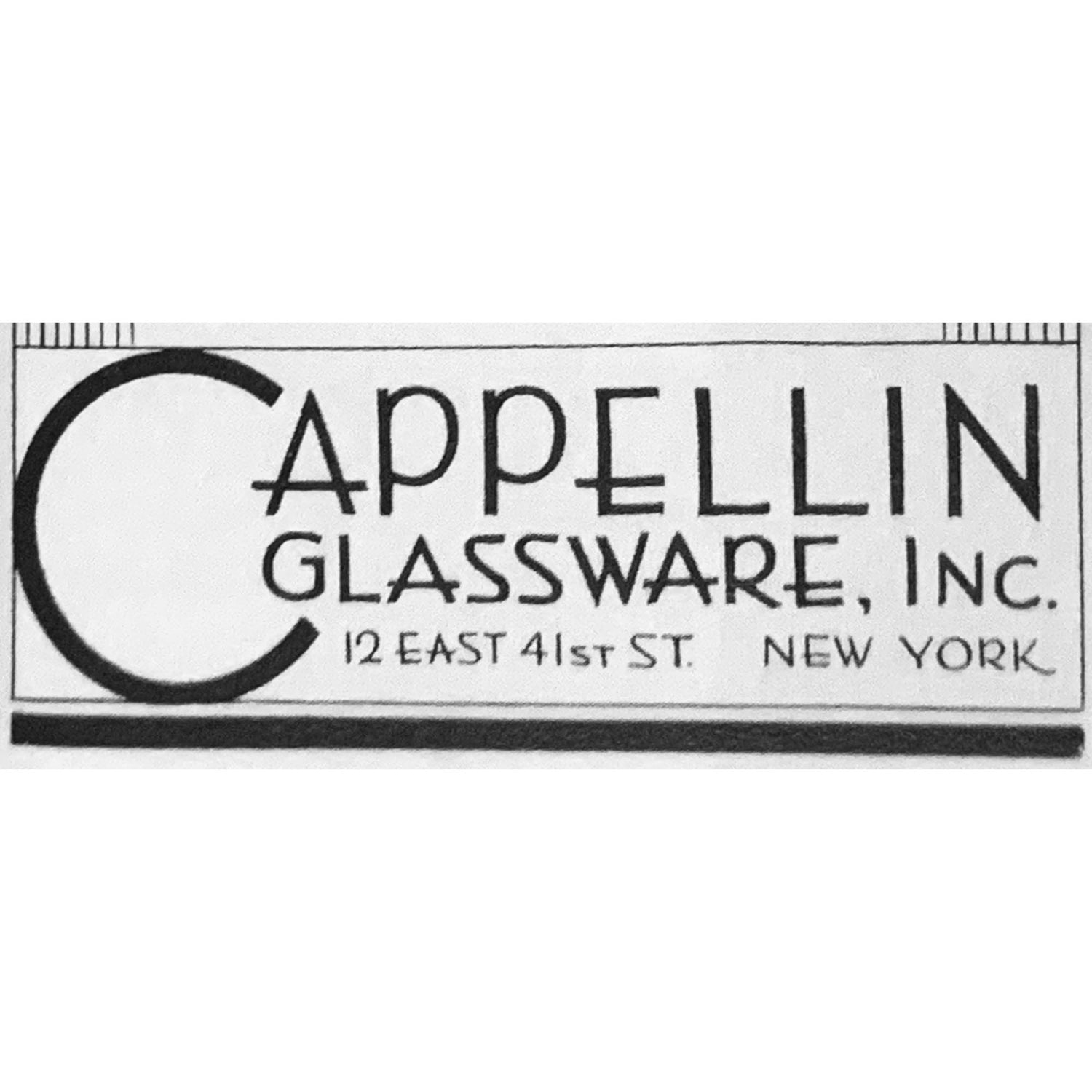Giacomo Cappellin , an antique dealer in Venice, Paolo Venini , a lawyer in Milan: this, to say, the least, unusual alliance on the Murano scene, began in 1921 to mark the revival of glassmaking art in Italy.
Initially, the partners should have been three, to include Andrea Rioda , a Murano industrialist already active for a number of years with his own furnace, but he died before the actual founding of the company.Production, whose lines where taken care of by Vittorio Zecchin in his capacity as art director, was noticed immediately for the thin and elegant glasswares, going back to the traditional Reinassance glassmaking, such as the "Veronese" vase, taken from the Annunciation by Paolo Veronese at the Gallerie dell'Accademia in Venice. This vase soon became the symbol of the new firm while many others were created, all totally new, like the "Libellula" vase, with its large thin handles. This purity of lines, highlighted by the use of glass with delicate hues or totally colourless, should be added to the extremely high qualitative standard of the individual objects, the result of the ability of the maestros, among whom we remember Nane Seguso , Diego Barovier , Malvino Pavanello (Nino) and Attilio Moratto , the latter specialized in the execution of lighting elements.
The critic Giulio Lorenzetti has this to say about them in a short treatise on Murano glass: "… very very simple shapes in the rhythm ad armony of these lines, created to highlight lightness and clear transparency in the faintest, almost evanescent of hues, the two extraordinary gifts of Murano blown glass, constitute the essential features of the new school, whose initiators were Venini & Cappelin, in association with an exquisite Murano artist, Vittorio Zecchin".
Success was not long to coming, with recognitions at the most important exhbitions and shows; ample space was dedicated to the new firm in specialist books and magazines and for the first time abroad as well, the new italian glassware found mention in "The Studio", "L'Art Vivant" and "Art et Decoration".
A few years later, the two principals became incompatible and broke with Vittorio Zecchin, who in practice has built up the firm's image with his own work and Cappellin-Venini & Co. Was wound up. The year was 1925 and in that very same year the firms born of the break-up were both present at the greta Exposition of Decorative Arts in Paris: the Maestri Vetrai Muranesi Cappellin & Co. found its place of business at the furnace of Palazzo Da Mula in Murano.
At the beginning Vittorio Zecchin carried on in his capacity as art director and continued the earlier work but he gradually moved away from sixteenth-century models and inserted other processing techniques in his lines such as filigrana , attaining outstanding results in their formal rigour and perfection of execution. Later, since Vittorio Zecchin had launched himself on career as an independent designer, the young Carlo Scarpa took over and began to characterize production with the introduction of new processing techniques, new colours and simple and rigorous shapes.
His work met with great success at the 1930 Triennale: vases in full colours, enhanced by applications of gold and silver, by iridescenses, or by forms indeed classical ut executed in simple lattimo glass underscoring their volumes, on occasion with the application of simple murrine along concentric rings.
Unfortunately, although the quality of its production was incredible, the workshop of Giacomo Cappellin was forced to close down in 1931, weighed down by costs that were too high: perhaps the firm was also the victim of exasperated search for perfection. In this respect we remember an episode that really took place and is now part of Murano's "mythology": one day, in front of his master glass blowers, among the best on the island, Cappellin called up one of them who had made a pair of chandeliers and after pointing out that there was a slight difference in height between them, with a sharp gesture made them fall off the table and destroyed them.
Giacomo Cappellin left Murano for good and moved to France, working on secondary glassmaking activities.


Polychrome stained glass window in lead-bound Murano glass. Civic Museums Foundation of Venice collection.

Studies and drawings for glass and lighting. Performed by Carlo Scarpa for MMVM Cappellin
La vetreria M.V.M. Cappellin e il giovane Carlo Scarpa 1925-1931 - Short Clip from LE STANZE DEL VETRO on Vimeo.
Bibliography: The M.V.M. Cappellin Glassworks and a Young Carlo Scarpa by Marino Barovier
Exhibitions: The M.V.M. Cappellin Glassworks and the Young Carlo Scarpa: 1925-1931



コメントを書く
全てのコメントは、掲載前にモデレートされます
このサイトはhCaptchaによって保護されており、hCaptchaプライバシーポリシーおよび利用規約が適用されます。